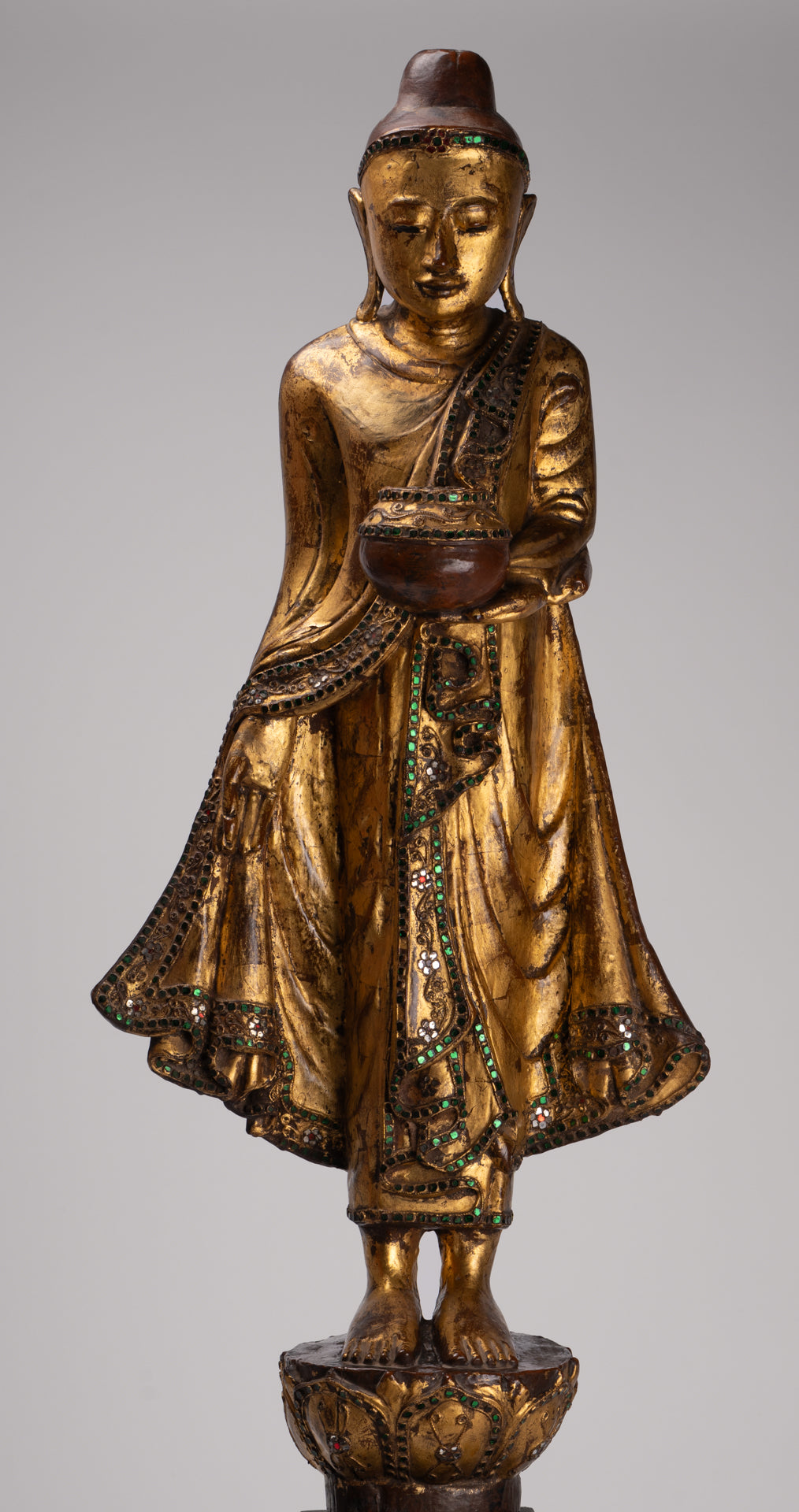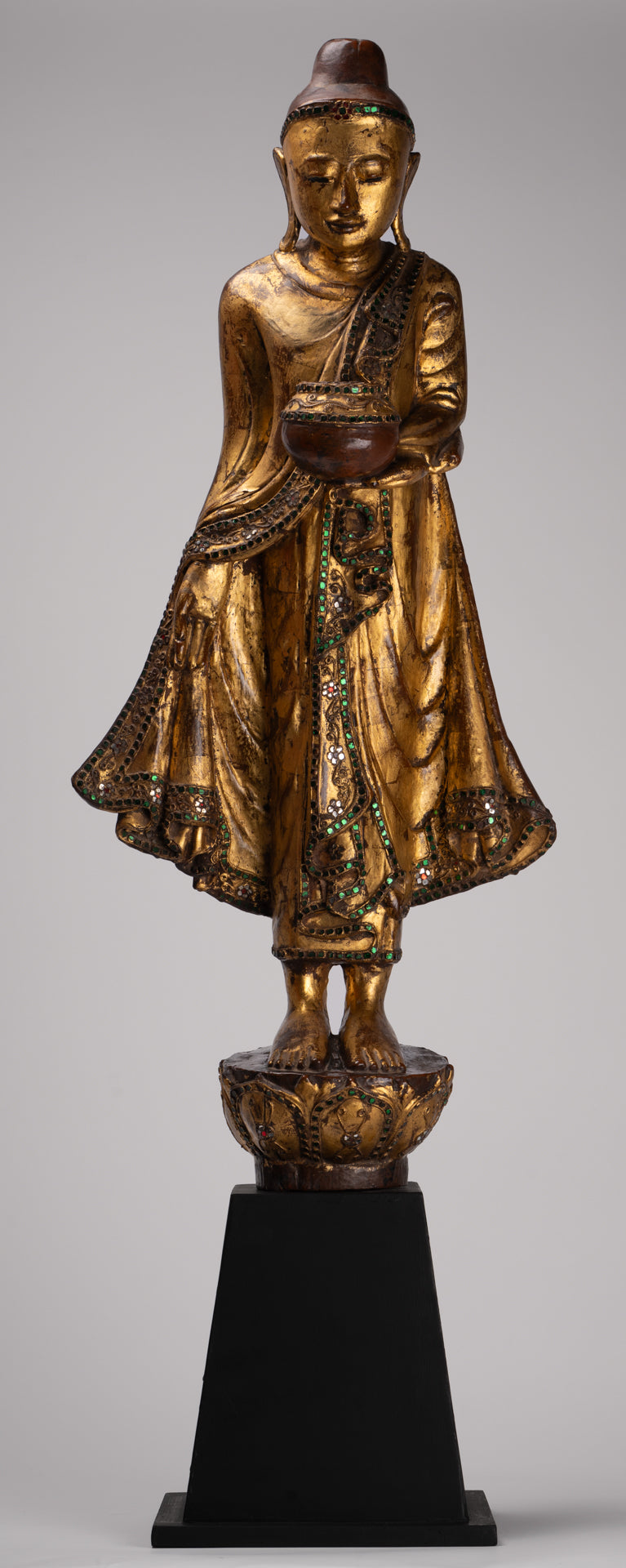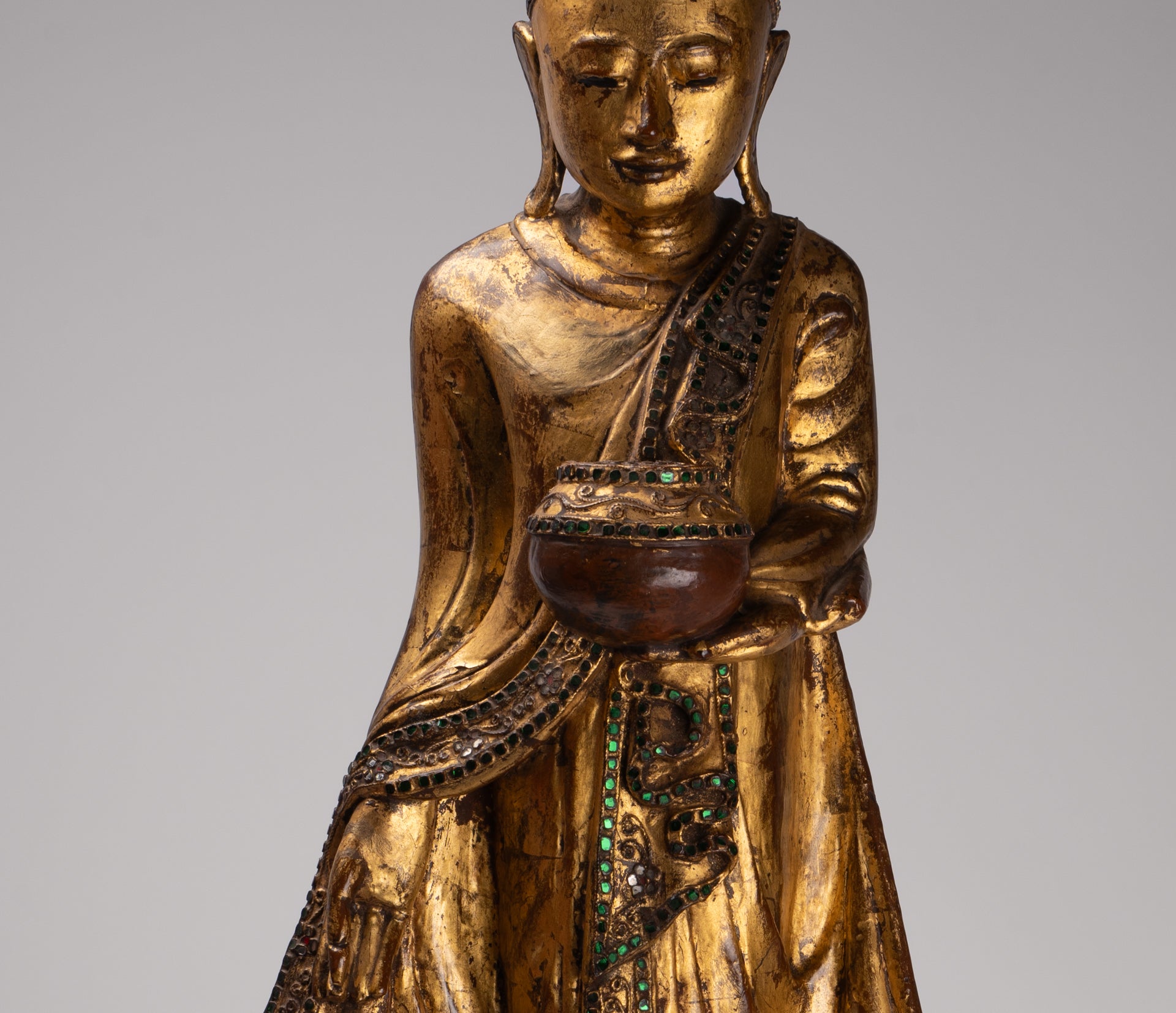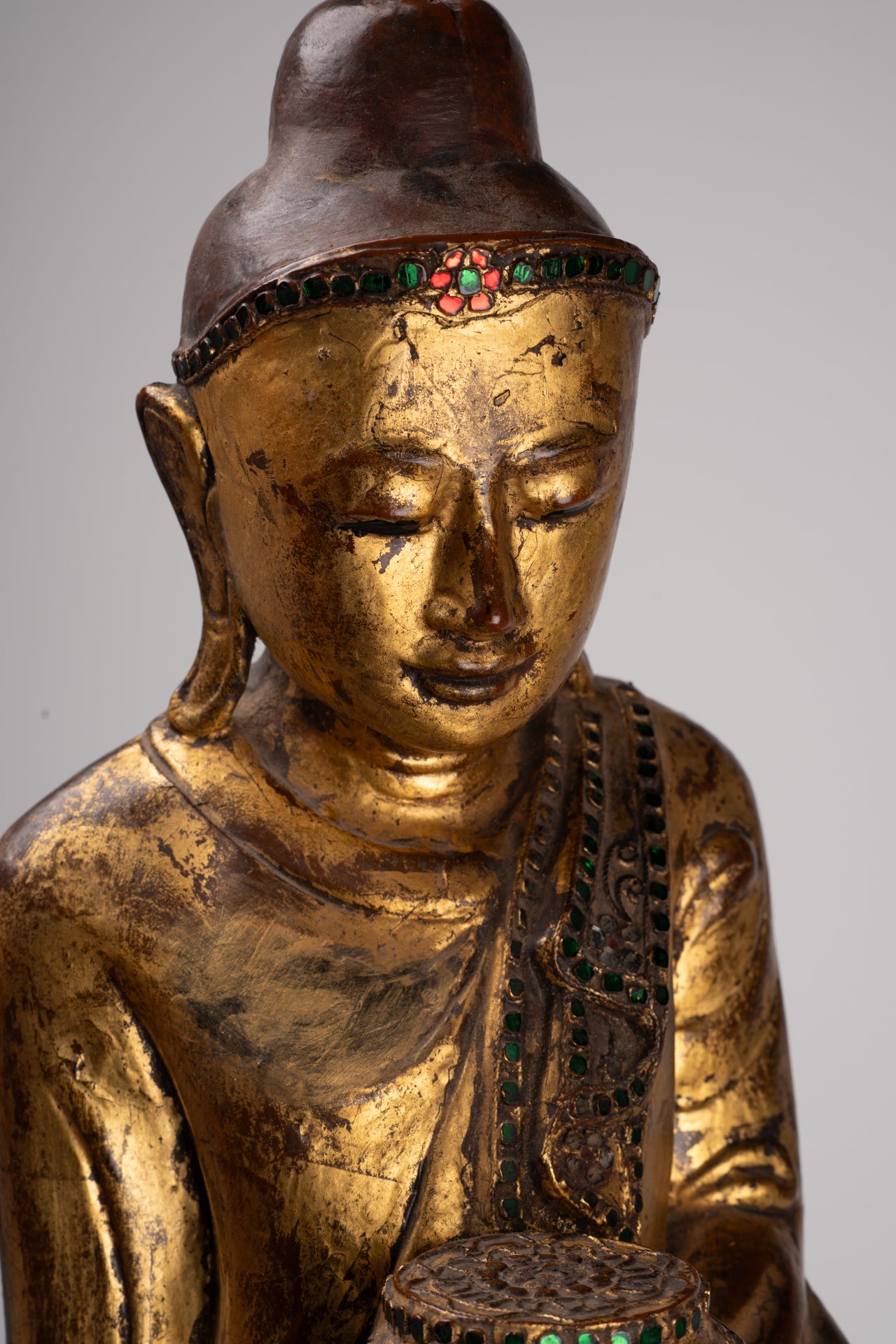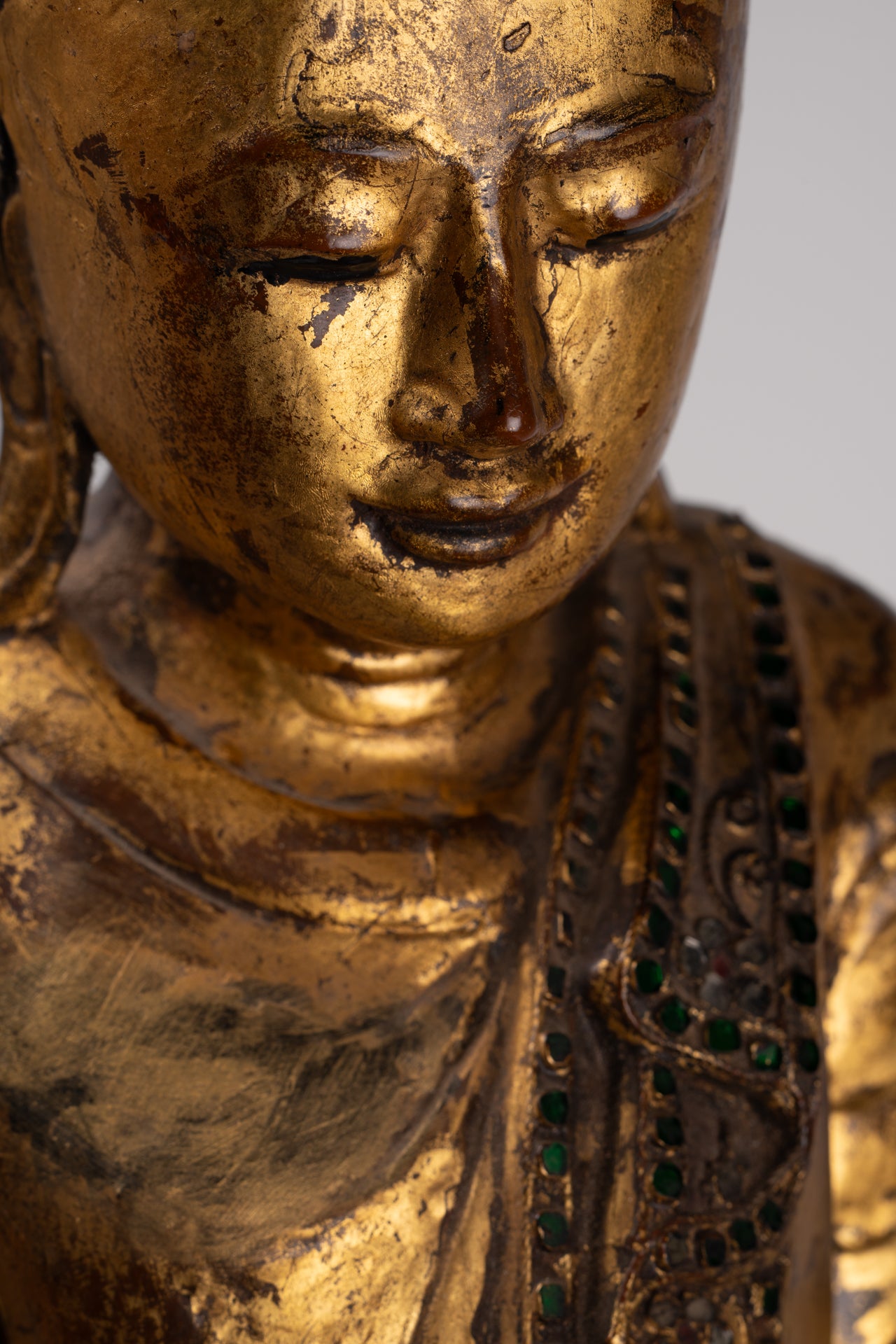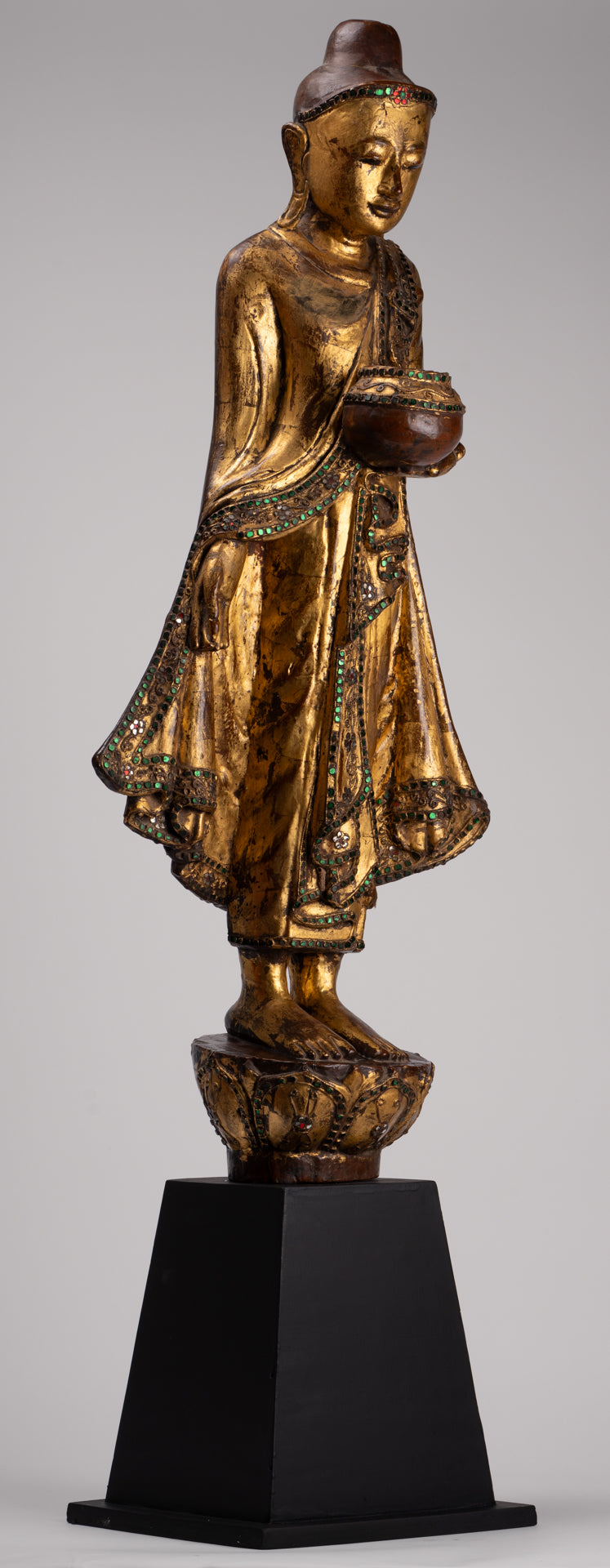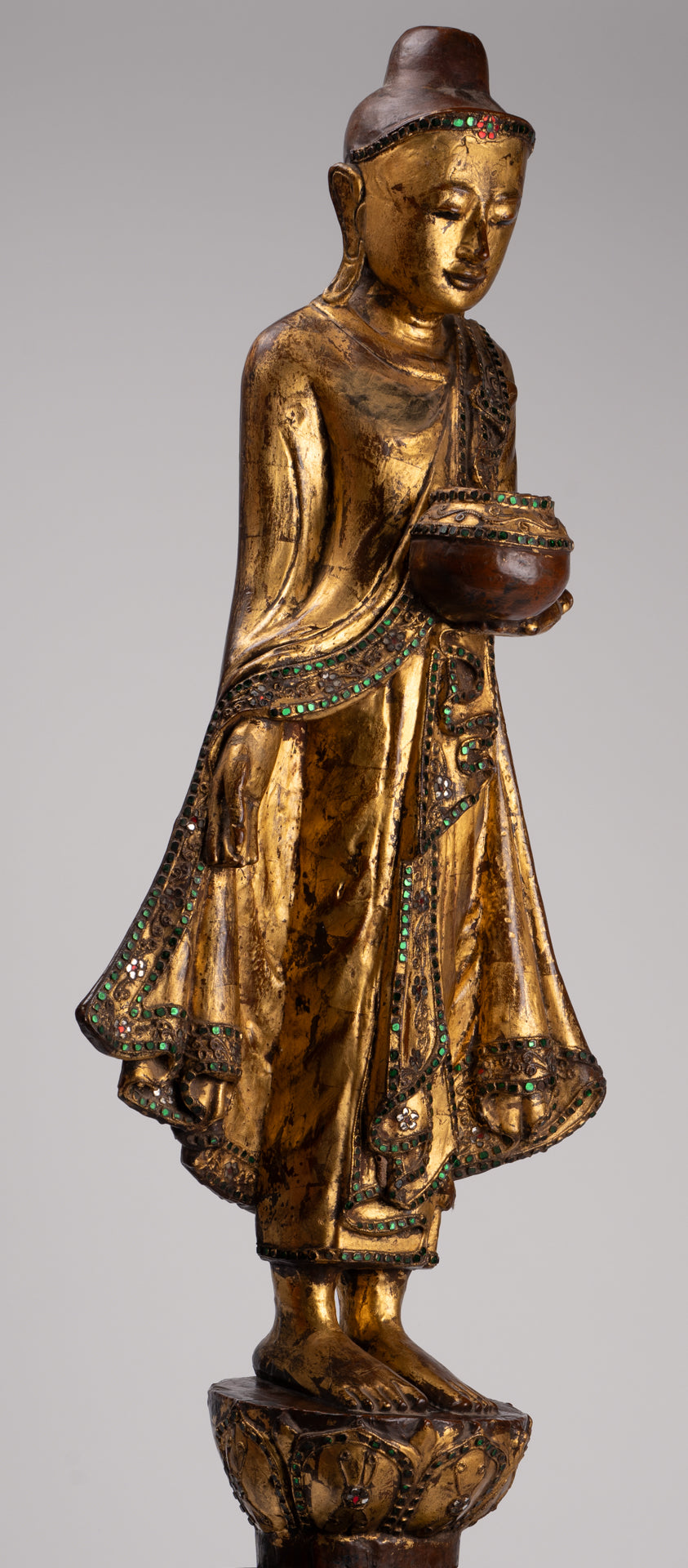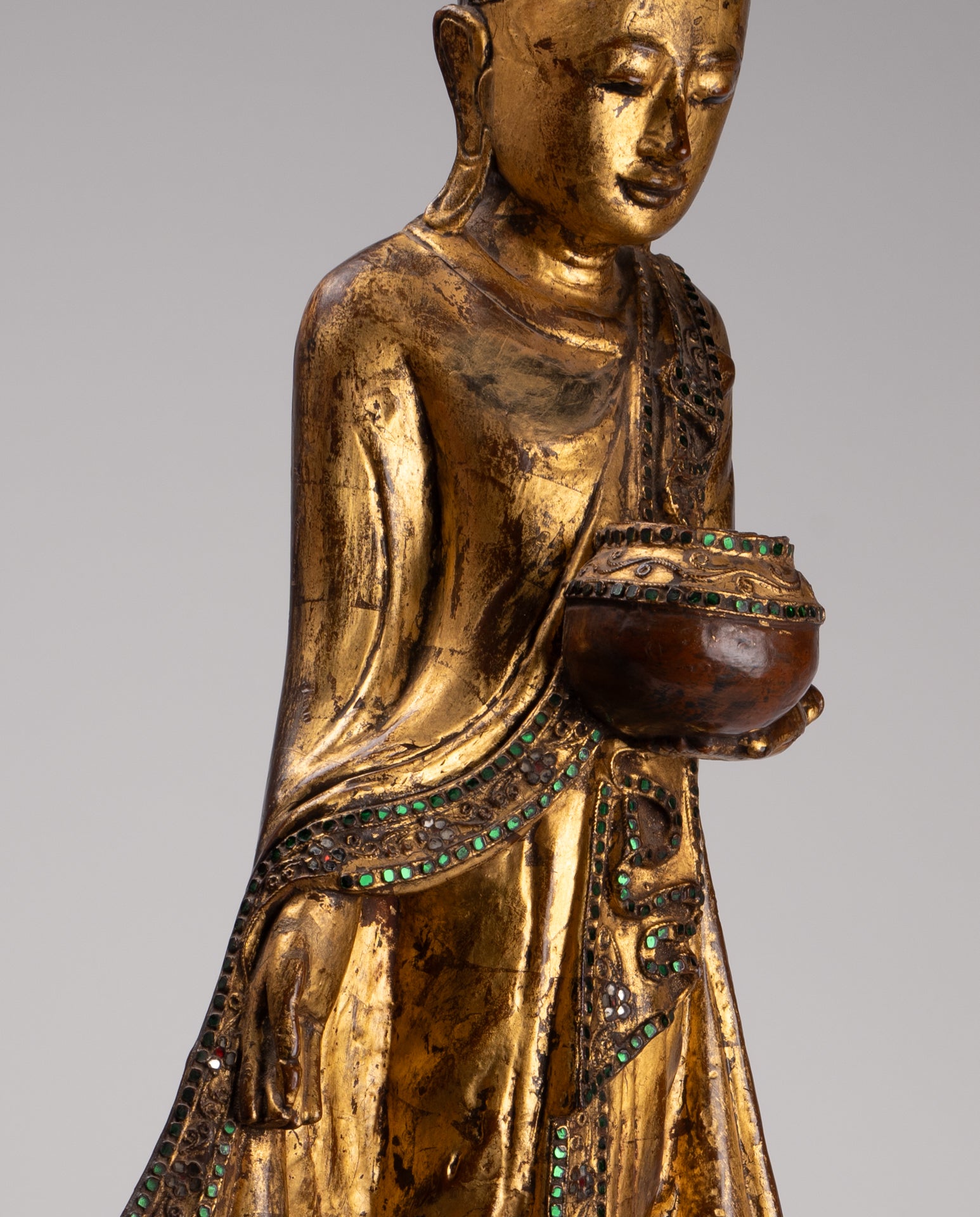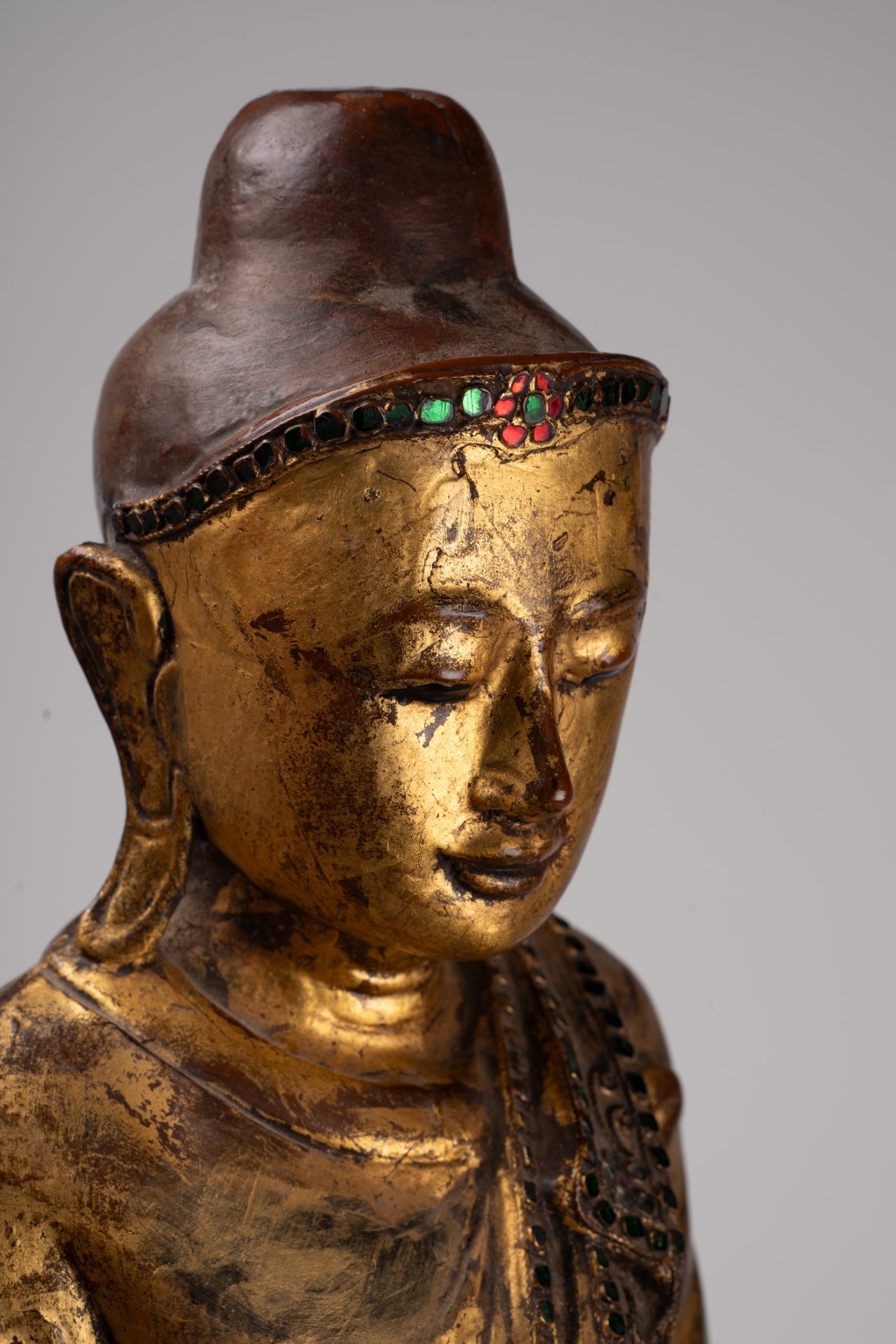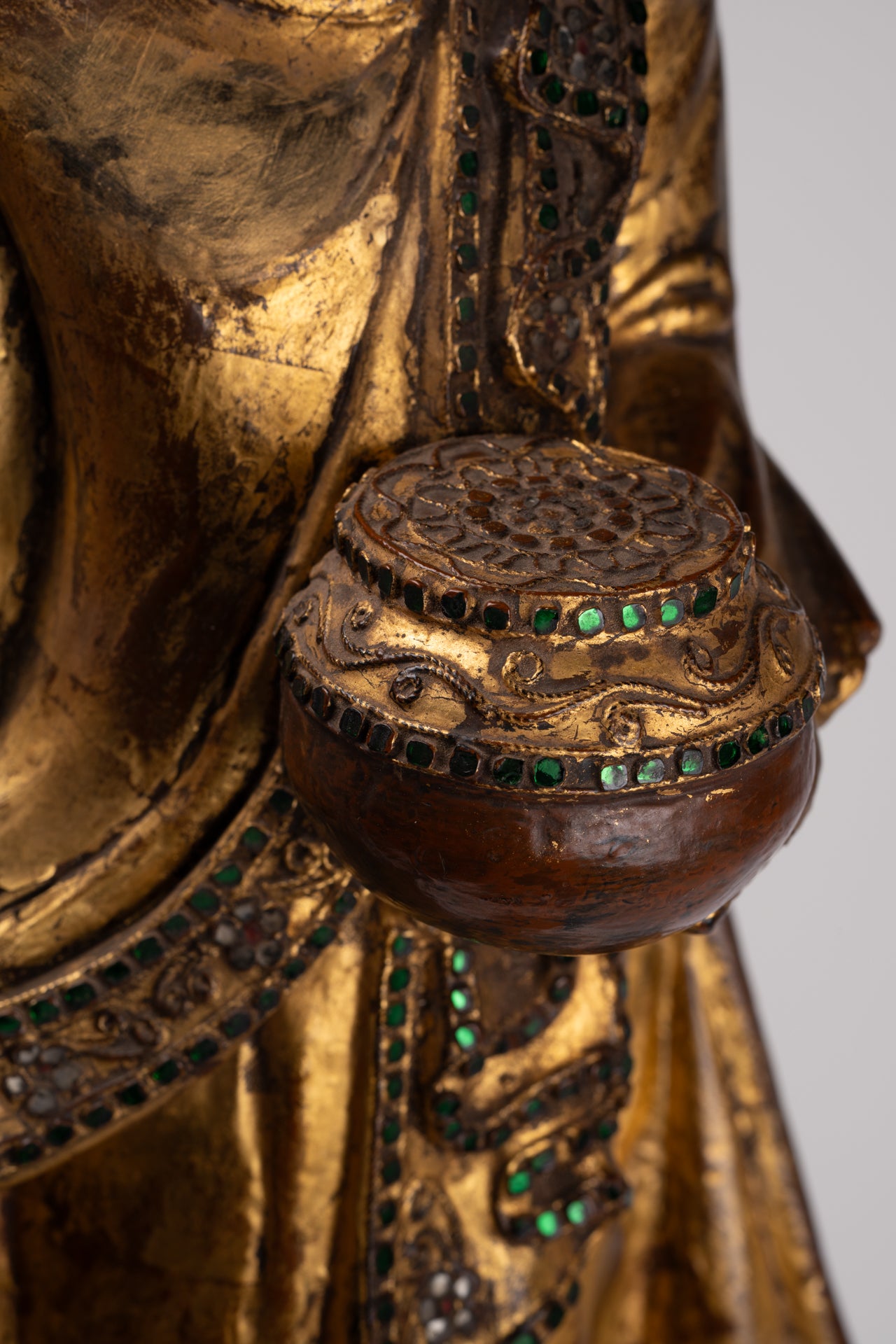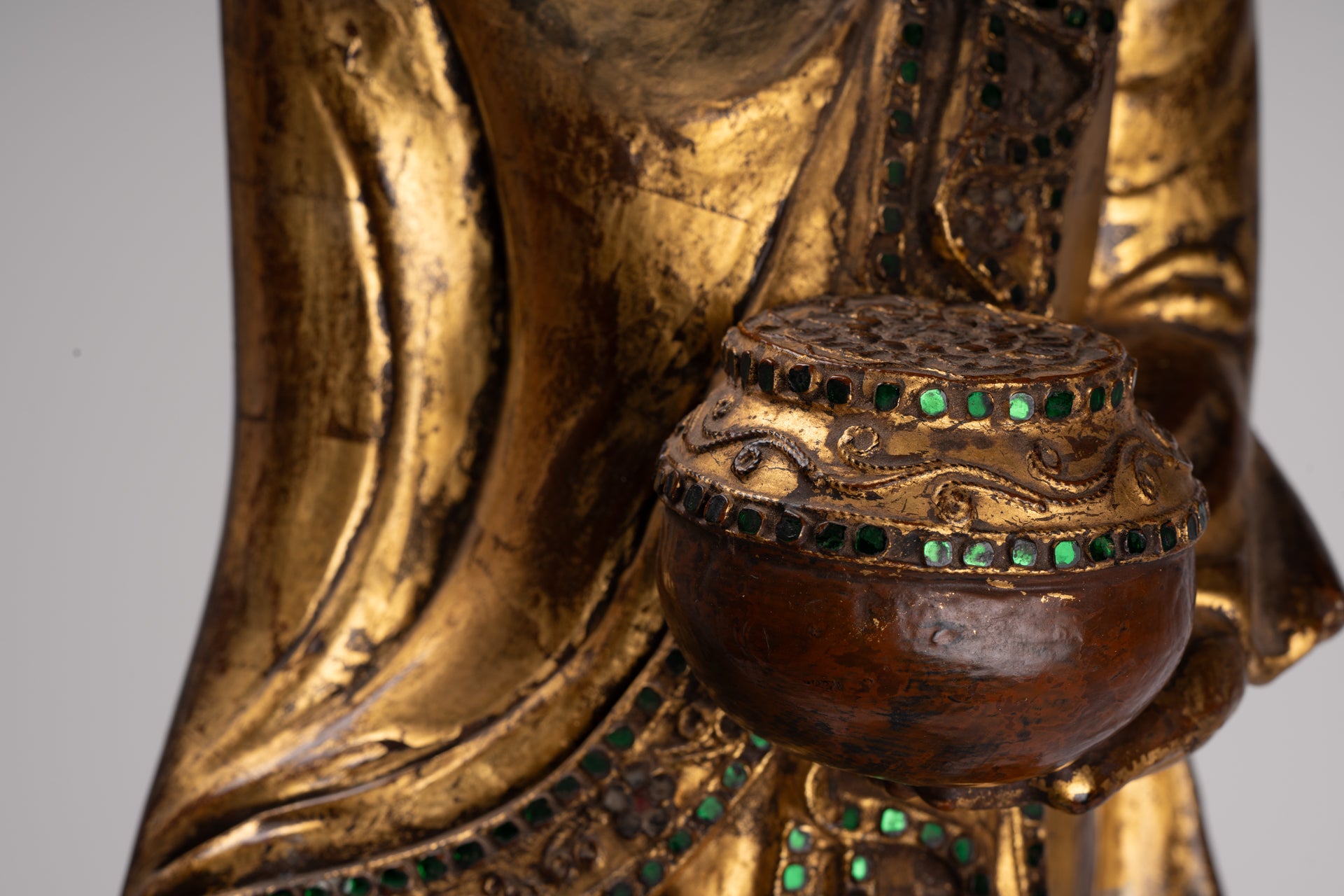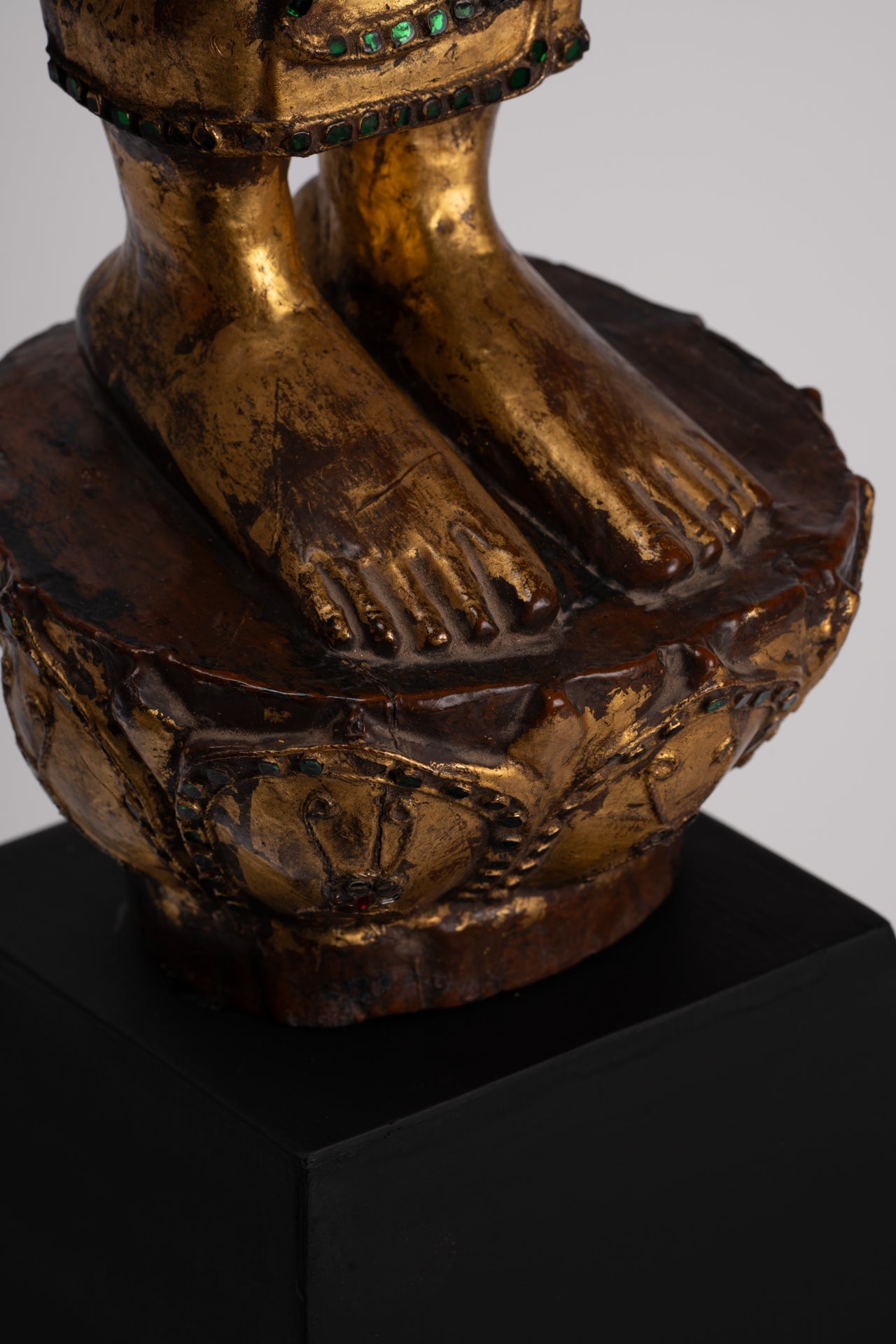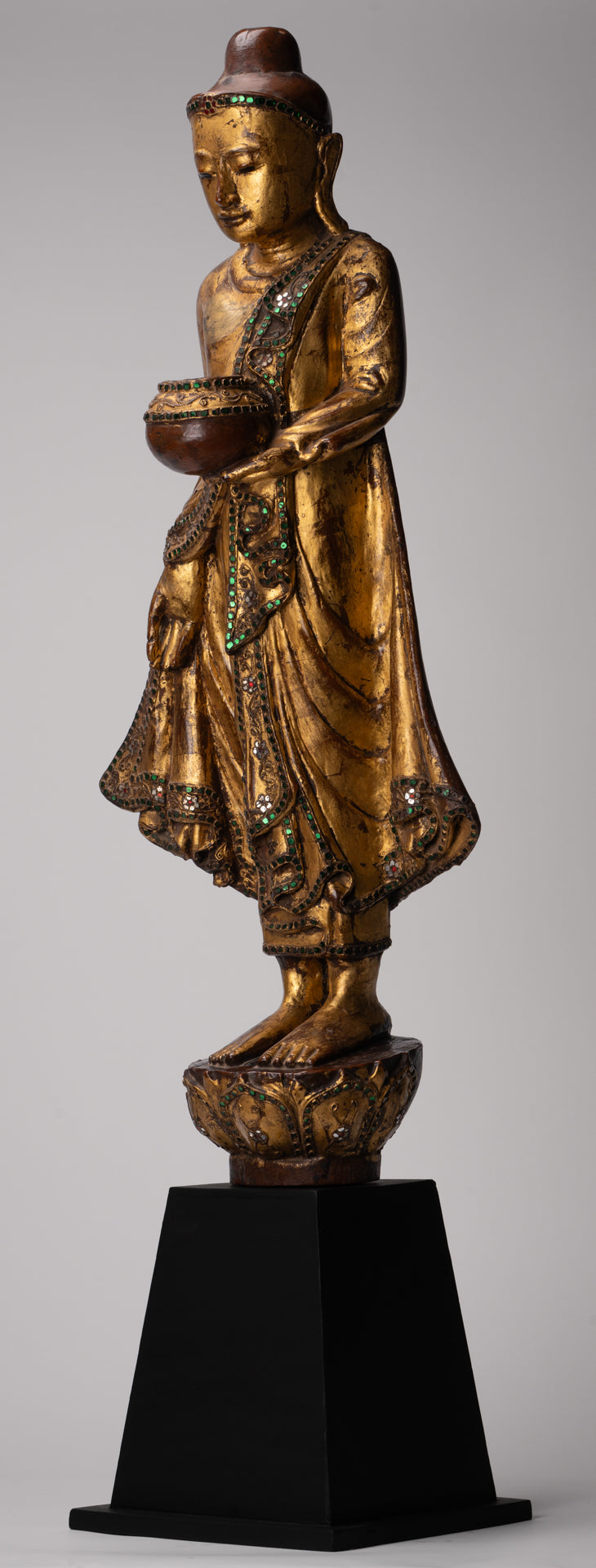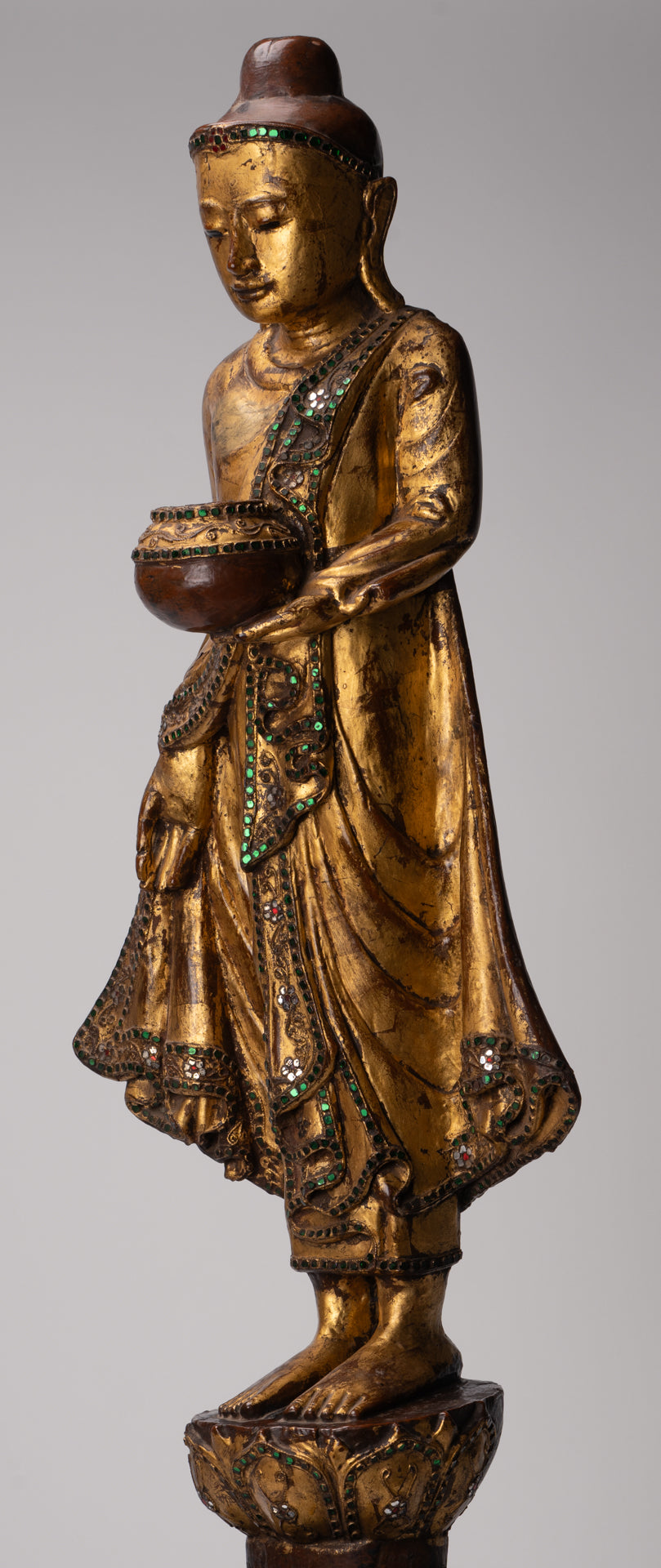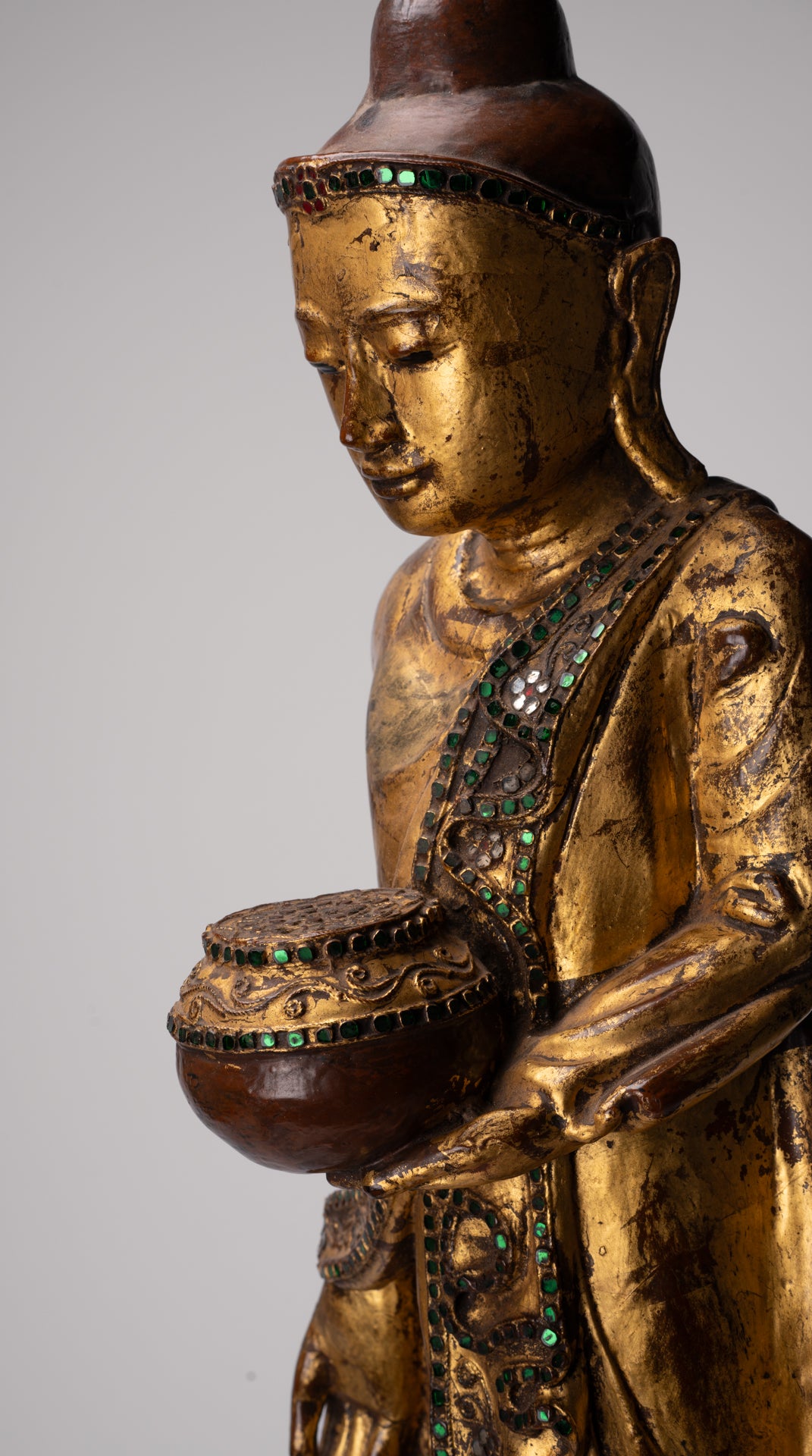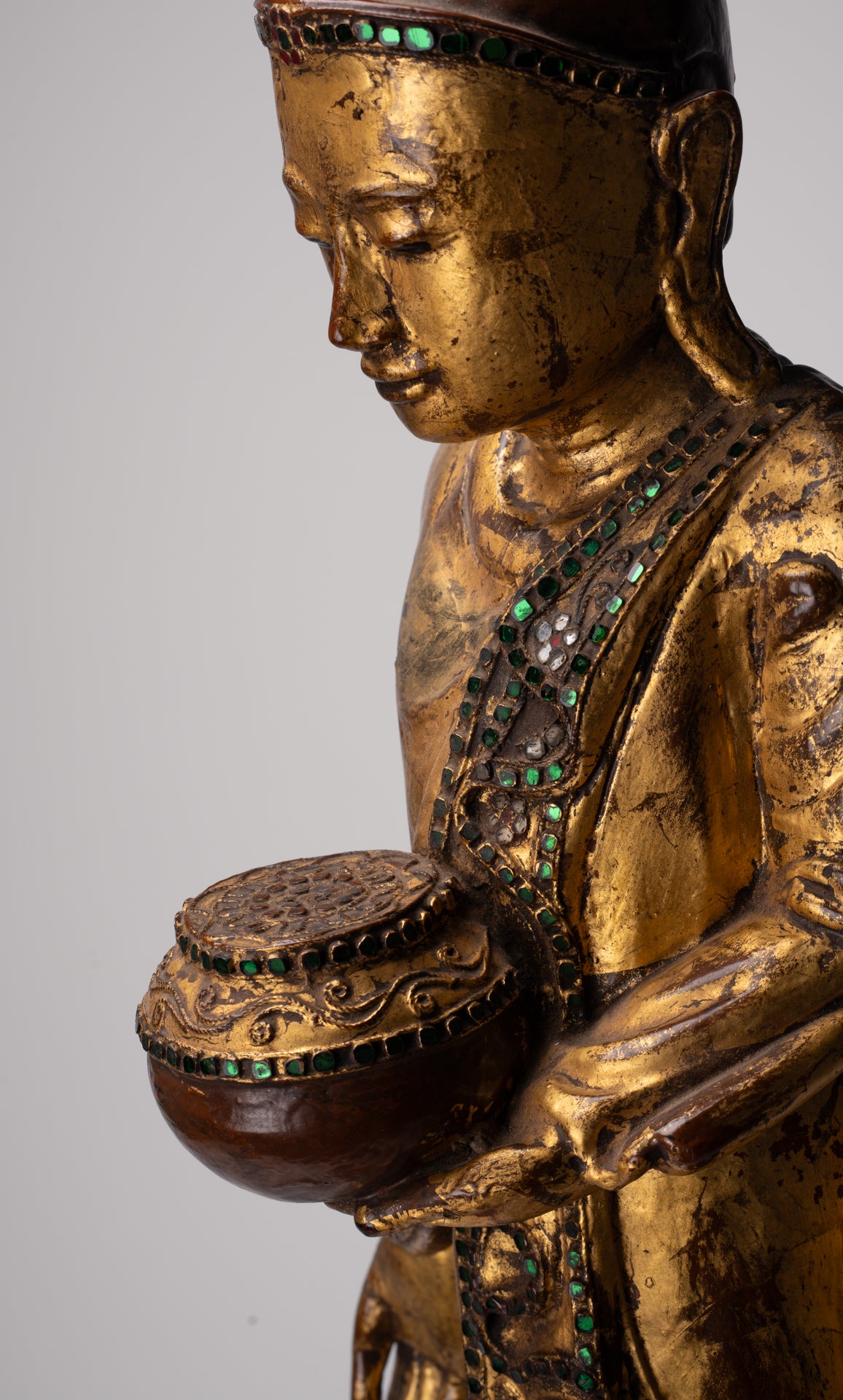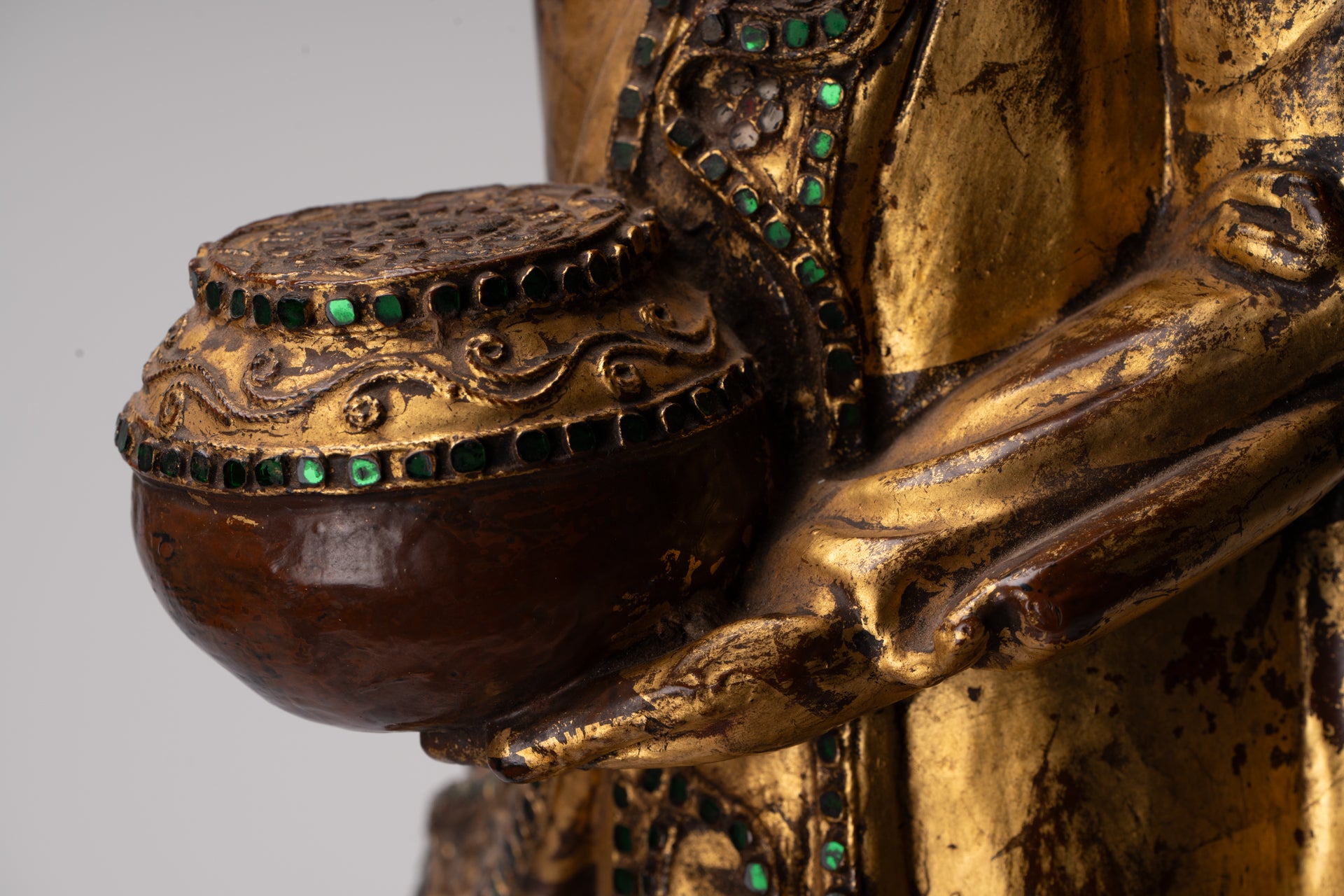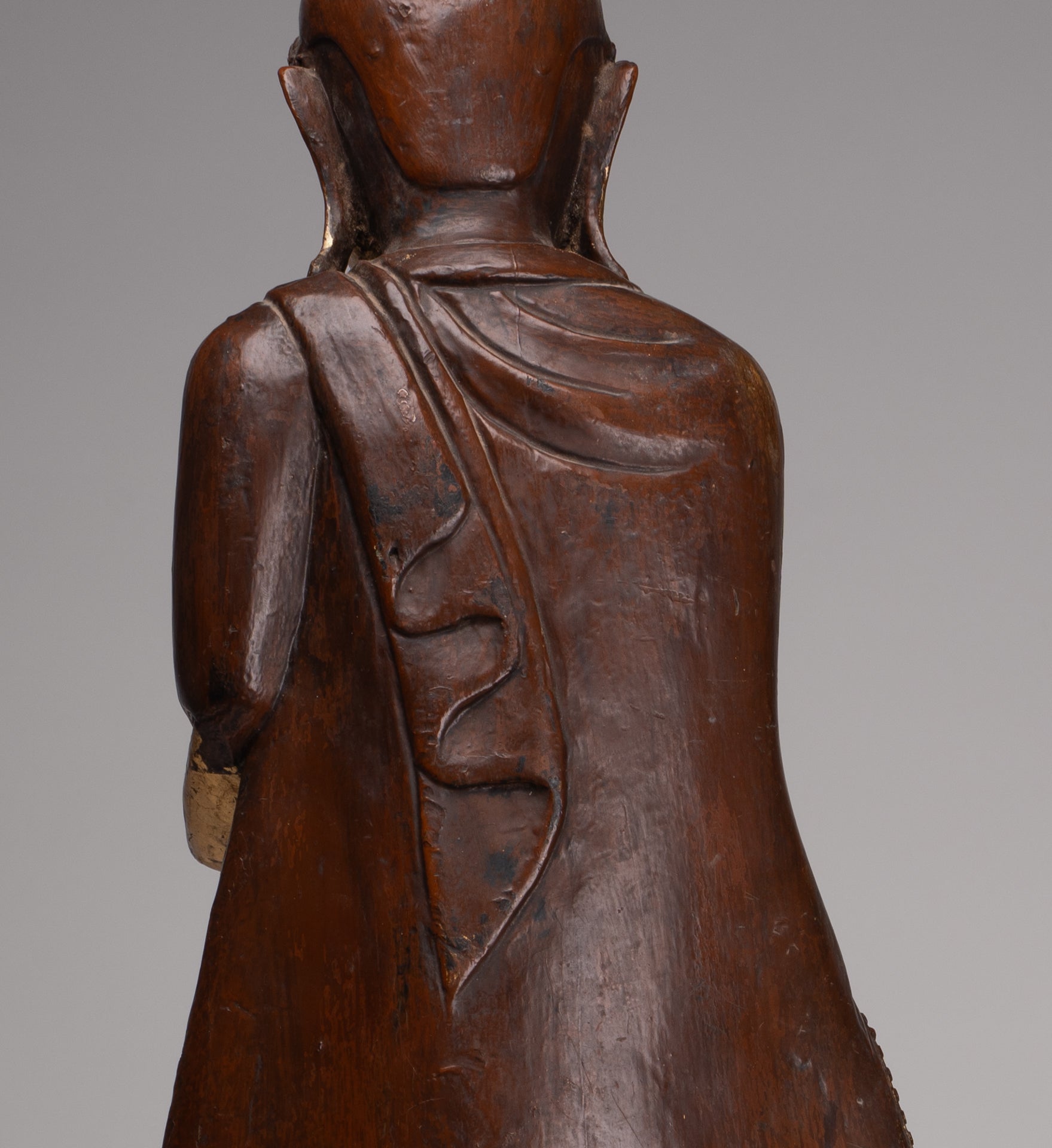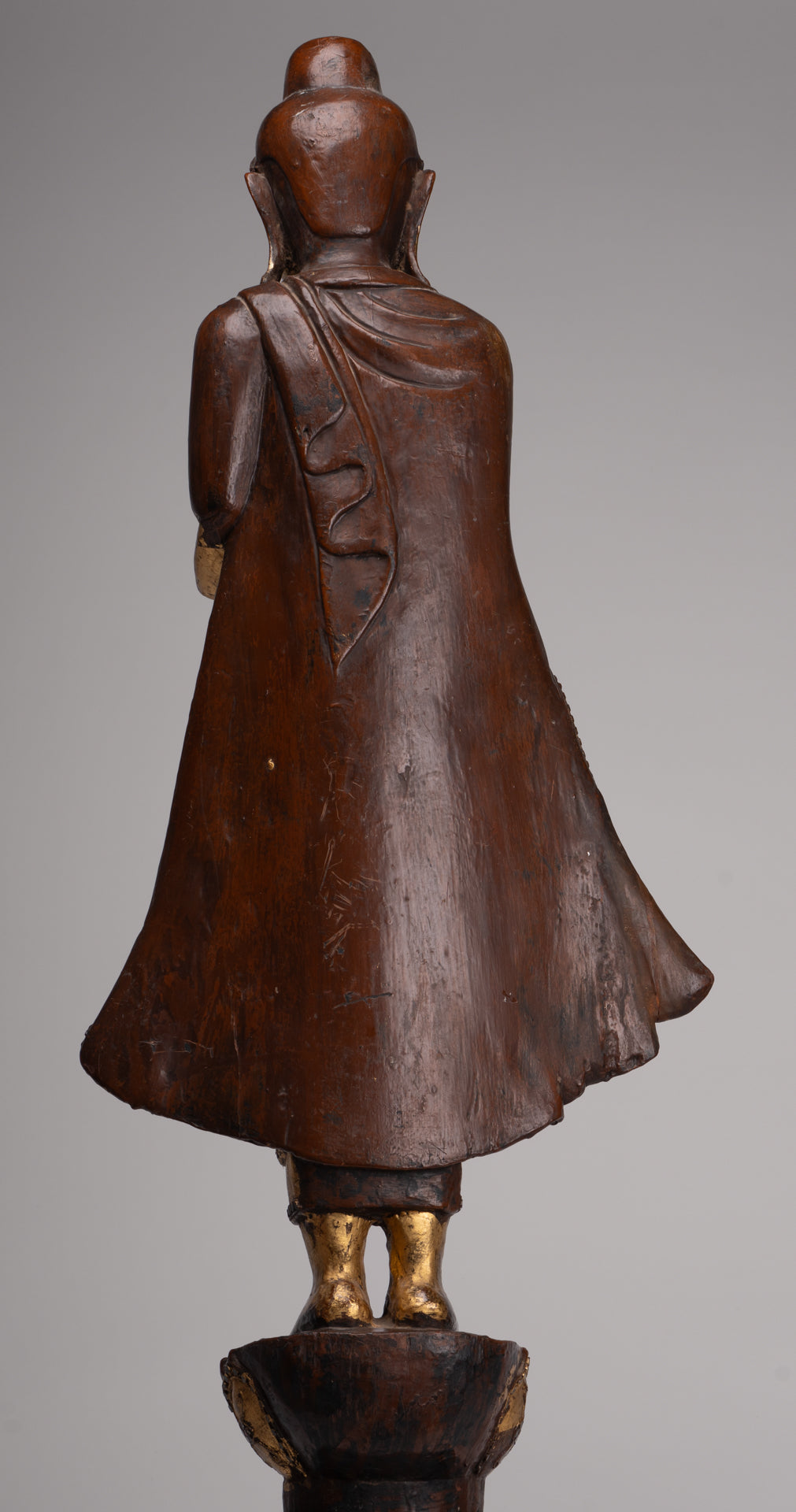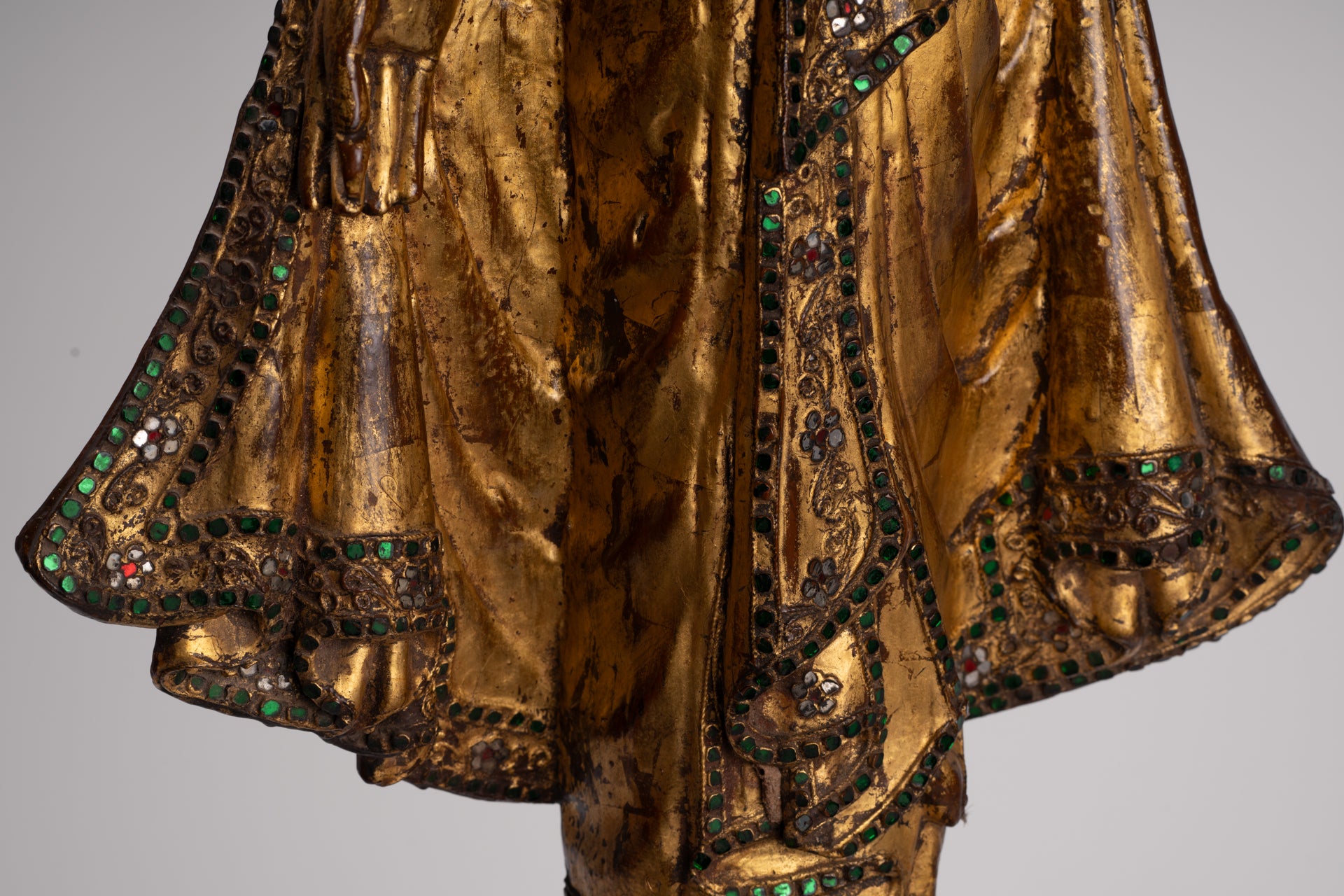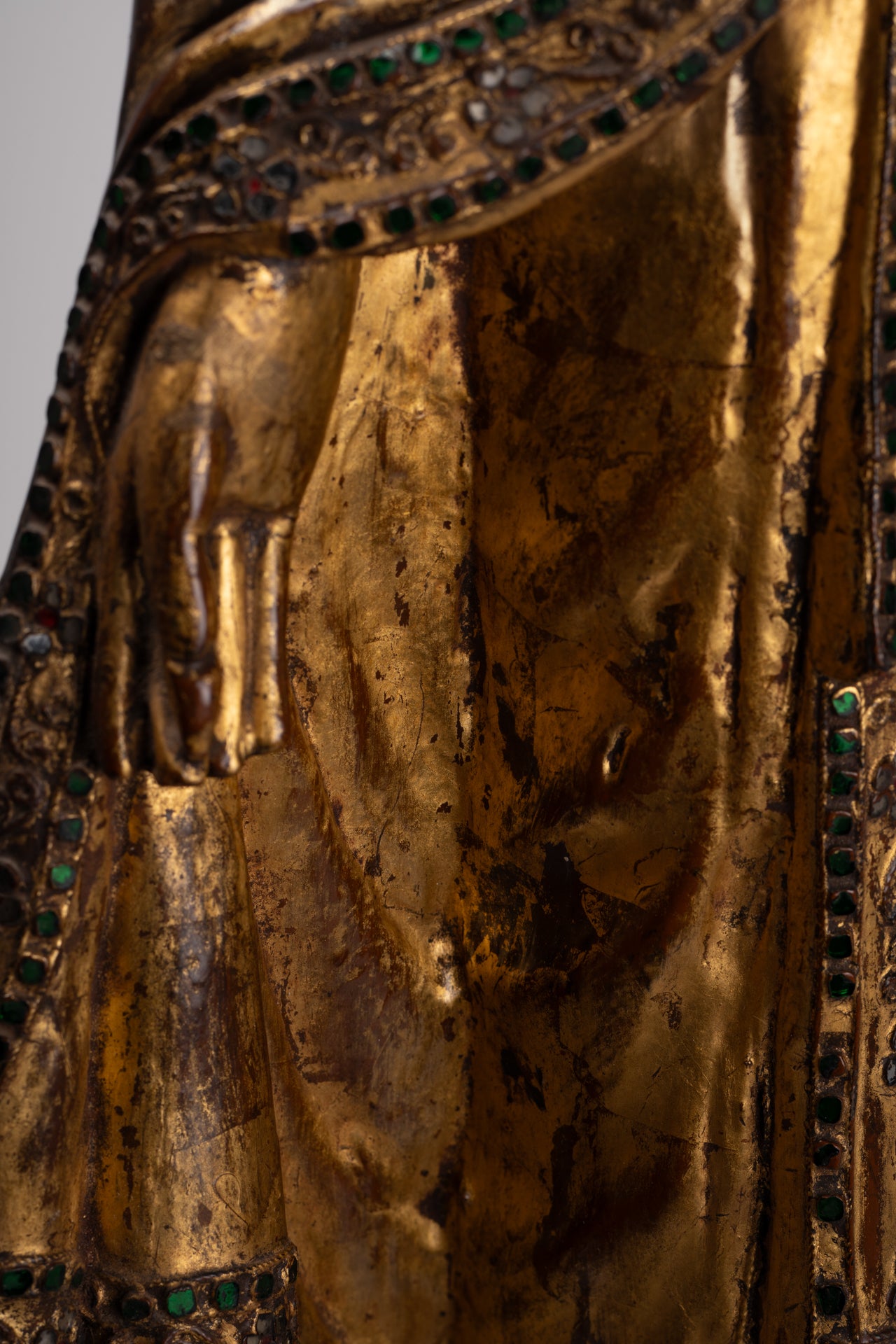-
Antique Burmese Style Standing Wood Mandalay Buddha Statue - 101cm/40"
Measures - (Height) 101cm/40"
An antique Burmese style Mandalay standing Buddha in charity pose. Dating to the late 19th, early 20th century.
Buddhist art is rich in symbolism, history, and regional variations, each reflecting the unique cultural and spiritual heritage of its origin.
One such distinctive and revered form of Buddhist art is the Mandalay style Buddha statue, depicted here holding an alms bowl.
Originating from Mandalay, Myanmar’s last royal capital, these statues represent more than mere artistic expression; they embody the principles of Buddhism and the profound reverence for monastic life.
This enlightened Buddha, is remarkable for his realistic yet delicate delineation of the limbs and the bejewelled robe which seems to cling to the body. The garment (sanghati) covers both shoulders.
A very naturalistic succession of wavy folds on the surface of his body revealing the soft contours of the body underneath. His face is handsome with a slight smile and straight nose.
The Buddha has a peaceful countenance with downcast introspective eyes and a firm brow.
These statues reflect the Theravada Buddhist tradition, which emphasizes the monastic way of life as a path to enlightenment. Shown here holding an alms bowl, symbolizing their commitment to a life of humility, discipline, and devotion.
As is traditional with later Mandalay pieces his robes are elaborate, with the folds of the robes cascading down his torso.
The Mandalay style Buddha statue, holding an alms bowl, is a profound expression of Buddhist art and spirituality. Originating from the culturally rich city of Mandalay, these statues encapsulate the ideals of monastic life and the path to enlightenment.
Through their elegant simplicity, expressive features, and symbolic elements, they inspire devotion, convey spiritual teachings, and preserve a cherished cultural heritage.
In a world often driven by materialism and distraction, the Mandalay style monk statue stands as a timeless reminder of the values of humility, discipline, and inner peace. Whether encountered in a temple, a monastery, or a private home, these statues continue to inspire and guide practitioners on their spiritual journey, embodying the enduring legacy of Buddhist art and philosophy.
The peaceful countenance of this Buddha exudes harmony.
The carving is beautiful as you can see in the fine details of the face. Each detail is rendered perfectly.
Sculpture is in good condition for it's age. A serene and meditative piece.
Provenance: Ex- private UK Collection.
To aid with safe shipping your Buddha sculpture will be wood crated before shipping, with DHL. There is no additional cost for this packing, crating and shipping service.
SATISFACTION GUARANTEE - We have been offering SE Asian Art for many years and are proud of the reputation we have developed for fair and honest listings. However, if for any reason, whatsoever, you are unhappy with your purchase please just let us know and we will provide a full refund. We want you to be 100% happy with your purchase.
-
The majority of orders will be shipped with DHL. This is a secure, express and fully tracked service.
Items less than 2Kg we typically ship using Royal Mail.
Once we receive your order we try to ship all orders the same or next working day.
Large and/or fragile pieces requiring palletising, specialist crating and/or extra packaging may take a little longer. Palletised shipments will be delivered curbside.
All orders over 35 GBP will be shipped free of charge.

-
We genuinely hope that all purchases delight.
However, if they do not, regardless of reason, we will refund all orders upon receipt of the unwanted item. Just notify us within 14 days of receiving your order that you wish to make a return and send the piece back to us with 30 days of delivery.
Let Us Help You Find The Piece You Desire
What Our Customers Think
We received our Buddha!! Just wanted to say thank you! I gave it to my husband yesterday and he loved it!! Thanks very much.
Marcela, Boston, MA, USA
Thank you kindly. All items received. Much appreciated for a very smooth dealing and the items are nice as described.
Sam, Sydney, Australia
Our bronze has arrived - thank you! It is a beautiful and extraordinary piece...I can feel the love and care that the original artist put into the work. With great thanks.
Annie, Ashford, UK


